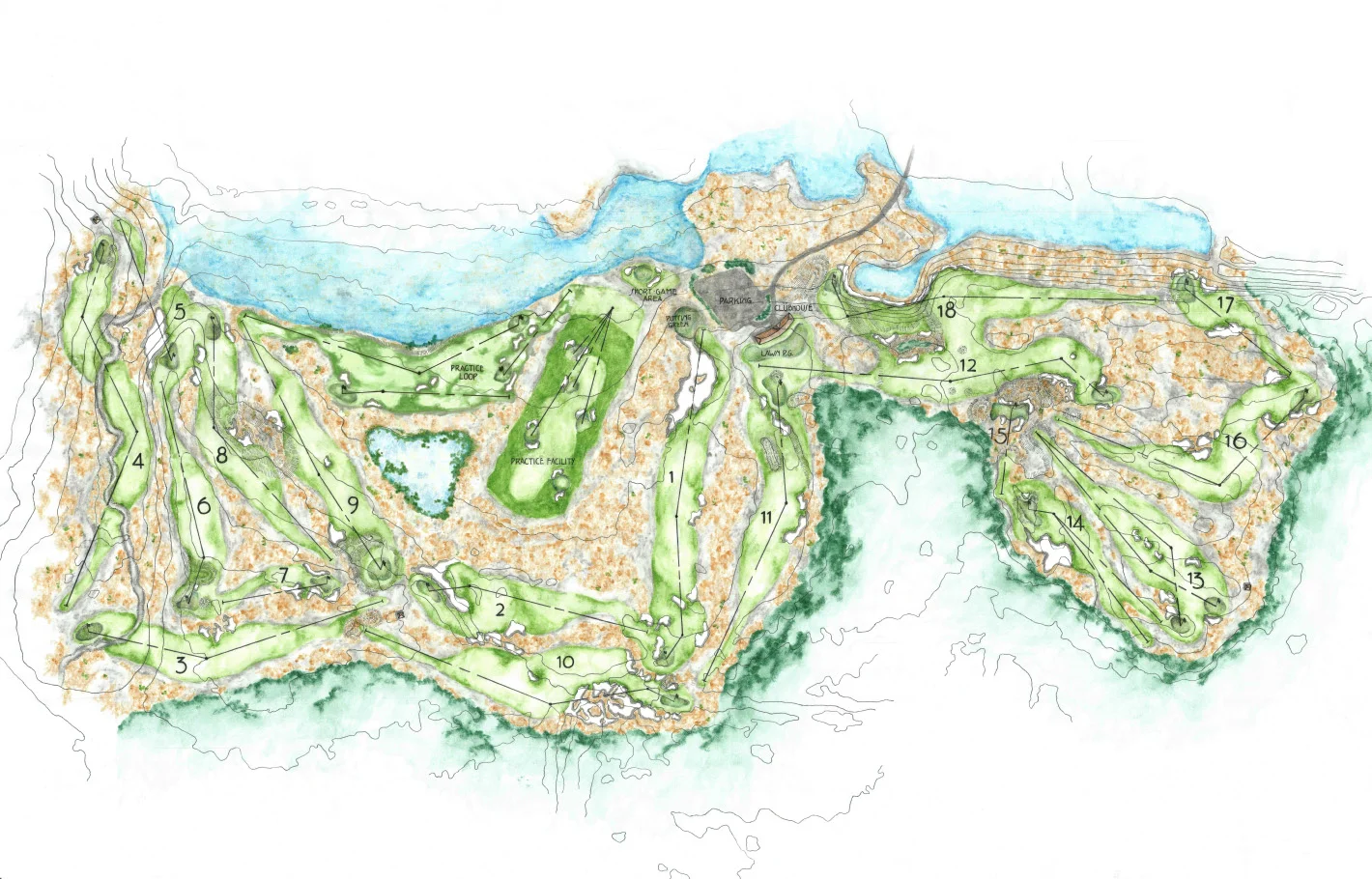Do you have a particular golfer in mind when you start a design? At the start, we are focused on what project goals are for the owner and the type of golfer we are trying to cater for is based on that. Since we have been fortunate to have been involved in several designs over the past couple of years, that particular golfer changes from project to project. With the Olympic Course in Rio, we knew we would be designing holes that would be played by the best players in the world on the biggest sporting stage in the world. At Mossy Oak Golf Club, we had an owner who wanted us to focus on playability for the average golfer since it would be open to the public. And, at Ohoopee Match Club, we have an owner who wants to design a course that will be played primarily for match play. All of these varying outcomes are ultimately what drives our thought process on playability for each project.
What is the usual reasoning when courses need updating? We always approach our restoration or updating projects from an historic angle, so it is frequently a need to get back to the design roots and character of a course. It is strange to hear that courses need to go back to their past to be updated, but those original designers were so good that bringing it back always results in good outcome.
What’s been your toughest challenge as a designer? The toughest challenges are usually the ones that are out of your control. They require the most patience and the highest degree of understanding as you try to move a project forward in a way that you know will yield the best results. I think it was well chronicled that we had a number of challenges during our work on the Olympic Course in Rio, and it taught us a lot about perseverance in the face of adversity. I think I am most proud of the effort of our guys and my family that we were able to work though the struggles and still produce a golf course that provided a fitting stage for a great couple of weeks for the game of golf.
Is there a lot of specialist equipment used in golf design? Not by us! We are still at our core, dirt guys, who design in the field and try to take advantage of the opportunities that come up in the field every day. We don’t need a lot of specialist equipment for that, except for knuckle buckets for the excavator operators. They allow the bucket to tilt and swing at different angles, watching our guys use them is like watching an artist with a brush.
What kind of unique jobs do you get offered? I think that my television gig for FOX at the US Open is pretty unique for golf course architects. It has been a lot of fun, I continue to learn on the job, and I have an amazing amount of respect for all of the things that go on behind the scenes to produce that event for television.
Is golf course design and maintenance sustainable? It can be. There is nothing that makes them mutually exclusive, it just requires proper focus and execution from both the design and maintenance side of the business. With proper stewardship of a golf course that is designed to exist in harmony with its surrounds, to utilise native vegetation and proper turf grasses, to reduce water usage and the reliance on artificial inputs for turf “appearance”, I believe that golf can be a great example of sustainable and eco-friendly land use. We still have a long way to go in this country, but if you look at the way golf courses are prepared and maintained in Australia and Great Britain, I think that is the way forward for golf in the US.
Is the industry in good health? I am not sure that the industry is in good health, but I also do not believe it is in poor health. My strongest belief is that golf is the greatest game created and that if we can get people properly introduced to the game it will thrive.
Do we need more golf courses? I think that there is always room for quality, no matter what business or field you are in. On a strict numbers basis, we do not “need” any more golf courses, but we need good, interesting, sustainable and fun golf courses that will help to get people interested and passionate about our game.




